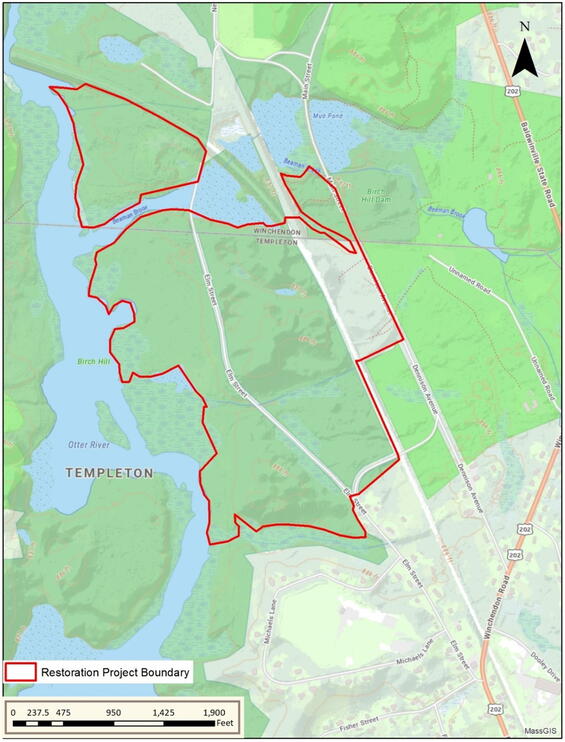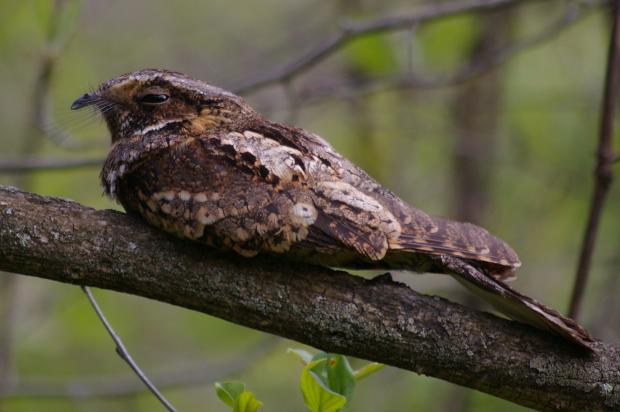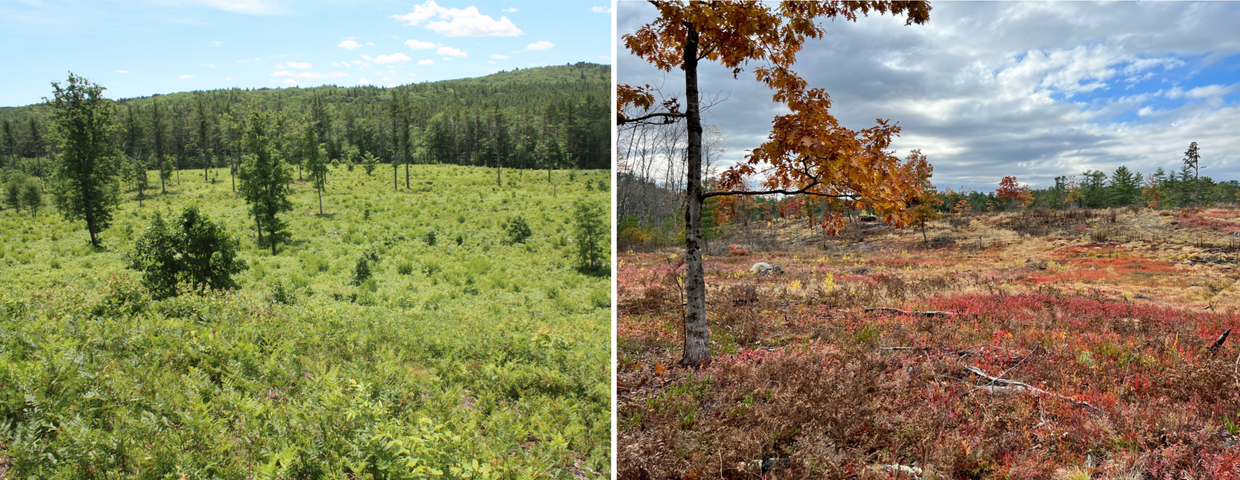About the project
MassWildlife, in partnership with the US Army Corp of Engineers (USACE), has started the initial phase of an important project that will restore globally rare fire influenced habitats including oak woodlands and inland oak and pine barrens. This project is located within USACE’s Birch Hill Dam in the towns of Templeton and Winchendon. High quality examples of these natural communities are rare and provide habitat for a diverse suite of specialized, rare, and threatened animals and plants including eastern whip-poor-wills and slender clearwing sphinx moth. These habitats are also incredibly important for common wildlife such as white-tailed deer and wild turkeys.
The first phase of the restoration project will be conducted on 140 acres along the east side of the Otter River in Templeton (see map below). This site is characterized by monoculture (single species) plantations of red pine and white pine along with forests of oak and pitch pine growing on well drained sandy soils. There are several streams and bordering vegetated wetlands within the site along with an overgrown field. These pine plantations were established in the 1930s by the Civilian Conservation Corp and are now in severe decline from red pine scale and needle cast, diseases that are killing many of the trees.
Using a variety of data, MassWildlife Restoration Ecologists have identified this location as having the potential—once restored— to be part of one of the largest woodland and inland barrens in Massachusetts. The Phase 1 site was selected because it still contains enough soil and vegetation characteristics of the desired fire influenced communities to make restoration achievable. For example, pitch pine and oaks (white, red, and scarlet) occur in high densities in this area and little bluestem grass, lowbush blueberry, and other heath species already occur onsite and will quickly spread after Phase 1 is completed.
Many species listed in the State Wildlife Action Plan (SWAP) as in greatest need of conservation will benefit from this ecological restoration project. For example, the area was a stronghold for eastern whip-poor-will in the 1960s; they have declined with the loss of suitable habitat since then, though they are still found nearby. Their numbers along with various state-listed moths, butterflies, and plants are expected to dramatically increase following the restoration actions. Future biological monitoring by MassWildlife biologists will document these biodiversity improvements.
The management objectives during Phase 1 are to salvage the dying white and red pine plantations through a whole tree timber harvest while retaining the oak and pitch pine. Tree removal will allow sunlight to reach the forest floor and soil disturbance from the tree skidding will stimulate the understory seed bank to germinate and grow. After the one-time timber harvest, fire will be reintroduced to the landscape using carefully planned prescribed fires. These periodic fires will be carried out by a highly trained prescribed fire team following a burn plan and in coordination with the local fire department. Other mechanical treatments such as mowing, mulching, and herbicides may be used to remove undesirable vegetation such as midstory pine, red maple, and invasive plants.
Expected results
These habitat restoration actions will result in an open woodland of oaks and pitch pine along with prairie-like barrens communities containing a diverse understory of shrubs, grasses, and flowering plants that support a plethora of native wildlife and plants.
MassWildlife has successfully completed oak and pine barrens habitat restoration at nearby Birch Hill Wildlife Management Area. These images show the vigorous regeneration of fire adapted understory plants including lowbush blueberry, sheep laurel and little bluestem grasses. Oak trees, which provide valuable food for wildlife, are retained during treatment. Results of the Phase 1 restoration work at Birch Hill Dam will be similar.
Map of phase 1 restoration area


